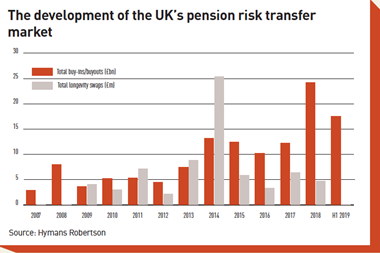Mortality rates in England and Wales were on average 3.8% lower in 2019 than in 2018, the highest year-on-year reduction since 2011, according to the Continuous Mortality Investigation (CMI).
CMI also said mortality in 2019 was the lowest it had ever seen in England and Wales.
As a result, its 2019 model includes a slight increase in life expectancy projections, with cohort life expectancies at age 65 for both males and females around one month higher than for the 2018 model, although still lower than in all earlier versions of the CMI model.
Aon said it expected use of the latest CMI model to lead to a slight increase, of less than 0.5%, in liabilities for UK defined benefit (DB) schemes compared with using the previous version of the model. Liabilities would still be lower under the new version of the model than under earlier versions.
Alastair Walker, UK head of longevity analytics at Mercer, said lower mortality rates in 2019 were raising questions about whether the slowdown in mortality improvements in recent years would continue or whether improvements could start to accelerate again.
“Following the slowdown in mortality improvements since 2011, some trustees and sponsors may have become complacent about longevity risk,” he said. “However, today’s news shows longevity trends can go both ways and it is worth considering alleviating the risk altogether.”
Stephen Caine, a director at Willis Towers Watson, said DB schemes undergoing valuations this year were still likely to assume that members live less long than was assumed when they last went through the process three years ago.
Cobus Daneel, chair of the CMI mortality projections committee, said: “It’s important to stress that mortality rates are volatile and, in isolation, the improvement seen in 2019 should not necessarily be interpreted as a return to the high level of improvements that we’ve seen in previous decades.
“Not everyone experiences the same level of mortality improvements. In recent years, people living in less deprived areas of England and Wales have experienced higher mortality improvements than those in more deprived areas.”
The CMI mortality projections model is updated on a broadly annual basis. It does not provide an assumption around long-term mortality improvements, requiring users such as UK pension schemes to make their own assessment.
The CMI is part of the Institute and Faculty of Actuaries, but has an independent executive and management.










No comments yet